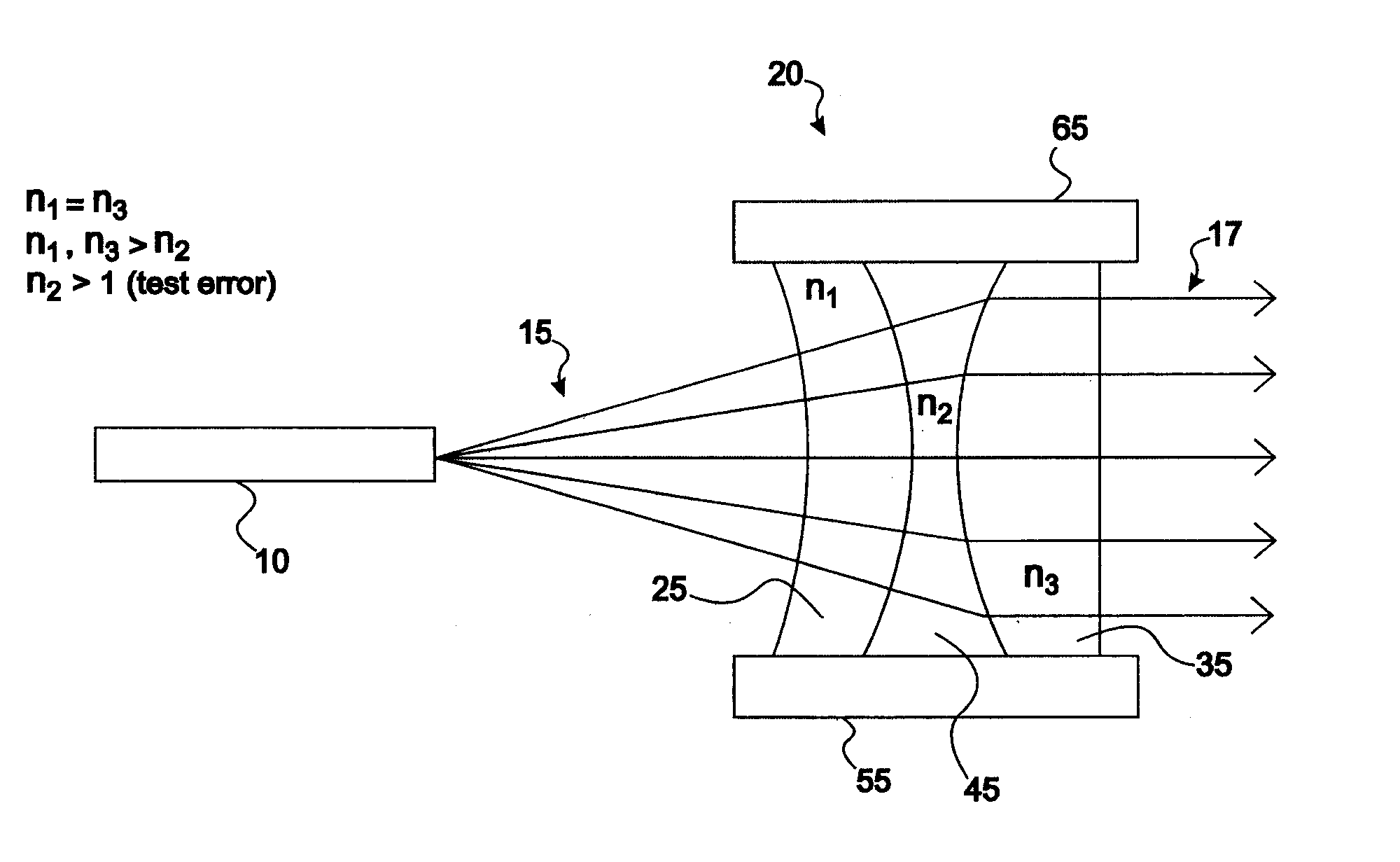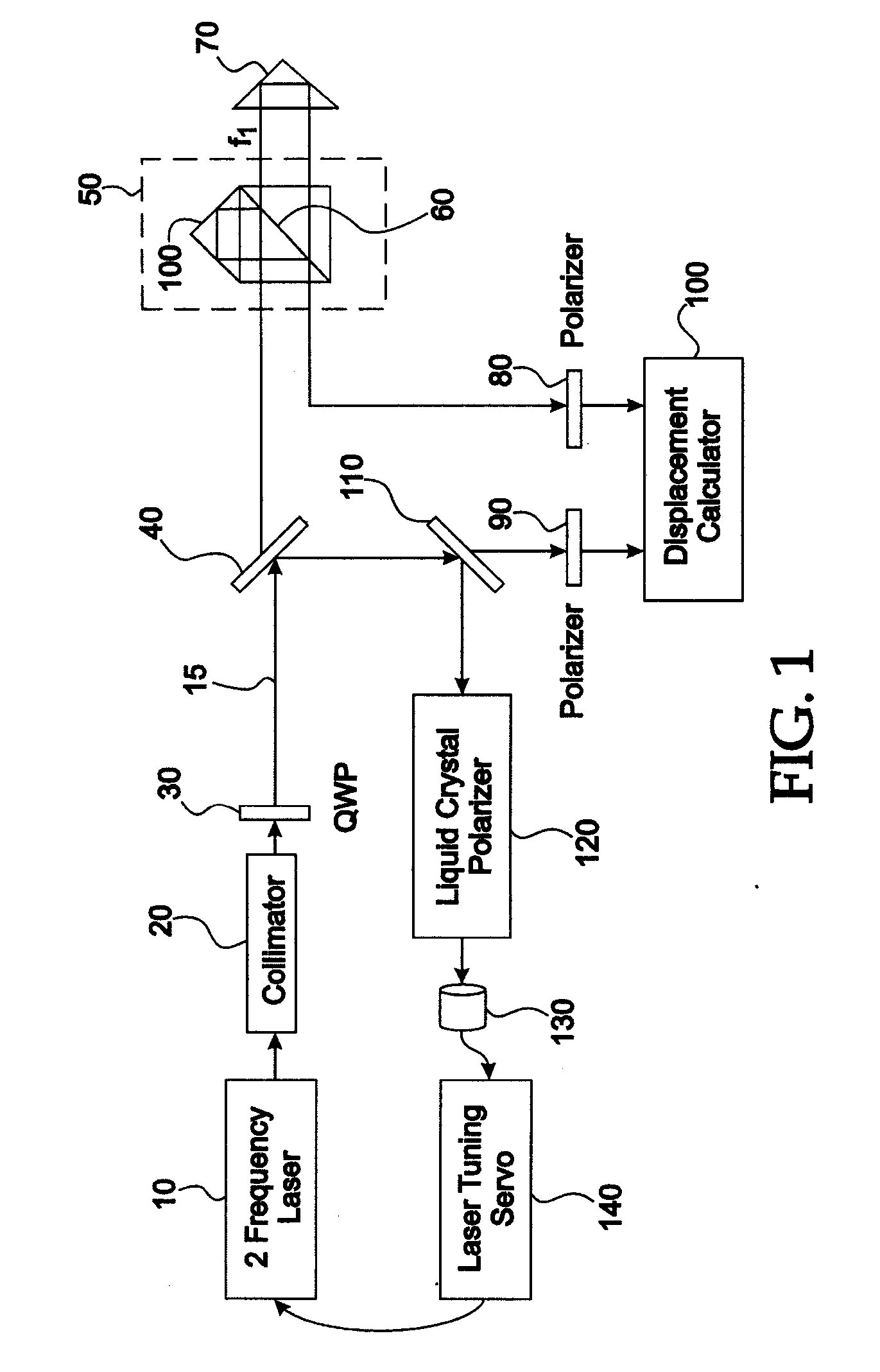Lens correction element, system and method
- Summary
- Abstract
- Description
- Claims
- Application Information
AI Technical Summary
Benefits of technology
Problems solved by technology
Method used
Image
Examples
Embodiment Construction
[0023] As employed in the specification, drawings and claims hereof, the term “lens assembly 10” or “lens assembly” means a lens assembly employed for beam collimation, reduction and / or enlargement in DMI, laser, optical, communications, photographic, telephony or other applications. The term is not intended to be limited to DMI applications, which are used here for descriptive and illustrative purposes only. After having read and understood the present specification, drawings and claims hereof, those skilled in the art will understand that various embodiments of the present invention may be employed in many applications beyond distance measuring interferometers.
[0024]FIG. 1 shows a block diagram of a DMI system, and depicts portions of an Agilent Model Number 10705 Linear Interferometer system. Telescope or collimator 20 includes a lens assembly 20 (not shown in FIG. 1) for enlarging the diameter of the laser beam emitted by source 10 from 1 mm to 9 mm. The diameter of the laser b...
PUM
 Login to View More
Login to View More Abstract
Description
Claims
Application Information
 Login to View More
Login to View More - R&D
- Intellectual Property
- Life Sciences
- Materials
- Tech Scout
- Unparalleled Data Quality
- Higher Quality Content
- 60% Fewer Hallucinations
Browse by: Latest US Patents, China's latest patents, Technical Efficacy Thesaurus, Application Domain, Technology Topic, Popular Technical Reports.
© 2025 PatSnap. All rights reserved.Legal|Privacy policy|Modern Slavery Act Transparency Statement|Sitemap|About US| Contact US: help@patsnap.com



